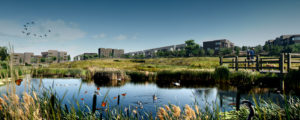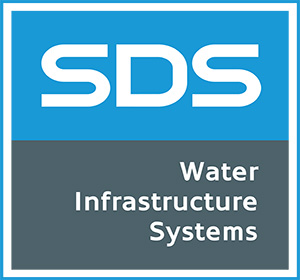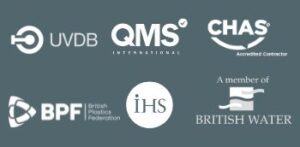Housebuilders in England will soon have an obligation to deliver a ‘net gain’ in biodiversity on their developments. Although parliamentary progress to introduce new regulations through the Environment Bill has been subject to delays, Local Authority planning teams and developers will already be preparing for what lies ahead.
The potential for Sustainable Drainage Systems (SuDS) to green urban infrastructure and encourage wildlife has long been recognised. So, it makes sense that they could deliver a net gain for biodiversity.
SuDS provide a wonderful opportunity to enhance our natural environment. Vegetative features, used appropriately alongside other stormwater management and smart technologies, can help deliver holistic designs that truly connect and restore biodiversity.

What is Biodiversity Net Gain?
Biodiversity Net Gain is an approach to development that mandates the need for a site to end up in a better position to support wildlife and habitats than it was before construction began. The Environment Bill sets out measures for applicable developments to deliver a 10% net gain in biodiversity, using a mitigation hierarchy and measurement system.
SuDS offer developers a means to achieve Biodiversity Net Gain targets and negotiate planning approvals, because they can use vegetative, landscaped features to manage surface water on a site. For planners and flood risk managers, SuDS may make net gain policy aspirations more easily deliverable and be a vehicle to protect and build healthy wildlife havens across urban areas. New natural corridors can be connected for species to thrive and distinctive local habitats, with distinctive wildlife, can be nurtured.
The Government, in its 25 Year Environment Plan, and in the Environment Bill, has set out a vision for SuDS to be part of a more comprehensive drainage approach to reduce flooding and deliver other benefits, which it says will be clarified in forthcoming revisions to Planning Practice Guidance. This will include how using SuDS can contribute to the delivery of biodiversity net gain.
For some developers, net gain may seem like more red tape and planning hurdles curtailing their profitability, not to mention their freedom to deliver on the Government’s equally forceful expectations for new homes and infrastructure. But the Government’s commitments are laudable, as the urgency to reverse biodiversity loss is just as much an environmental emergency as cutting greenhouse gas emissions for example.
The very nature of wildlife loss makes it silent, gradual and unnoticeable. Floods, droughts and wildfires serve up daily evidence of global warming, but there is no such reminder that many species familiar to our grandparents, from skylarks to house sparrows, frogs, toads, butterflies, moths, barn owls, bats and wildflowers are now rare sights. More than 100 British species have become extinct in the past 100 years, many more are threatened, and some, like bees, are the lifeblood of natural health and well-being.
In October 2019, the milestone State of Nature Report painted a bleak picture of ongoing species decline since the 1970s to conclude there has been ‘no let-up in net losses of the UK’s wildlife’. With 41% of species studied in decline and 15% of species under threat of imminent extinction, it was a wake-up call. Yet, at the time, the report received much less media attention than climate change. These are parallel and connected environmental emergencies.
While successful conservation projects offer cause for hope, there is a long way to go to replace the thousands of habitats already lost to new development and intensive farming practices. The Environment Bill proposes the introduction of Local Nature Recovery Strategies, together with the use of conservation covenants to ensure charities or government bodies can be effective long-term stewards of conservation and environmental net gain.
It’s true that biodiversity net gain makes the aspirations for SuDS more deliverable, and that SuDS can help to support healthy habitats. However, net gain should also force us to become more mature in our approach to good SuDS design. As drainage designers, we must educate ourselves to understand the needs of the local flora and fauna, to consider the whole ecosystem, and to deliver connectivity between habitats both on and off the development. To deliver meaningful habitats, means healthy soils, clean water, a variety of habitat-types and separation from people. Then, we can really create complete ecosystems in towns and cities where people and wildlife can live alongside one another.
Best practice SuDS designs mimic natural processes and manage rainwater as close as possible to where it falls, often by attenuation or infiltration. SuDS can be designed entirely above-ground, or used in combination with manufactured products.
Net gain is an added challenge for designers and developers of residential developments at a time when economic recovery will be on everyone’s minds. The space that vegetative SuDS take up above ground, as well as the added maintenance burden, can conflict with the pressures to deliver more homes. That burden can be minimised by using vegetative features in combination with manufactured components, for example, underground stormwater storage tanks such as SDS GEOlight® and treatment devices such as the SDS Aqua-Swirl™ vortex separators.
Designers should consider carefully the role of vegetative SuDS components in providing pollution control. If ponds and wetlands are deployed as sacrificial devices to treat pollution, then their ability to support wildlife could well be compromised. Using a hydrodynamic vortex separator, such as SDS Aqua-Swirl™, at the inlet to the pond or engineered water storage facility to remove sediment and pollutants in the runoff is highly advisable, so that the stormwater management system works in harmony with the environment. Designing a ‘hybrid’ SuDS system and combining a basin, pond or swale with a manufactured device provides assurance of measured, repeatable and effective pollutant removal.
We should also never forget that water reuse is the first priority of the SuDS design hierarchy, yet this is all too often overlooked. Capturing surface water for reuse by means of rainwater harvesting systems is a legitimate sustainable drainage function, that also saves water in drought-prone and water-scarce areas. If saving water is a priority, then the biodiversity benefits may be better delivered appropriately, elsewhere. Captured rainwater could even be reused to irrigate the habitats we create, helping the flora and fauna to thrive.



